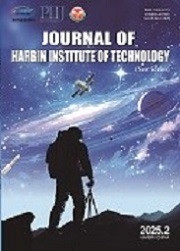| Author Name | Affiliation | | Lang Liu | State Key Laboratory of Mountain Bridge and Tunnel Engineering, Chongqing Jiaotong University, Chongqing 400074, China
School of Civil Engineering, Chongqing Jiaotong University, Chongqing 400074, China | | Jie Wang | School of Civil Engineering, Chongqing Jiaotong University, Chongqing 400074, China | | Hong Yang | School of Civil Engineering, Chongqing Jiaotong University, Chongqing 400074, China |
|
| Abstract: |
| To analyze the impact effect induced by vehicle-bridge coupling vibration during traffic congesting, hundreds and thousands of congestion scenarios consisting of various vehicle platoons were collected and used to develop vehicle models as well as traffic congestion load models. Furthermore, the idling vehicle-bridge coupling model was established by the finite element method and the congestion models were applied to calculate dynamic impact factors. Compared with the value specified in Chinese codes, the calculated values were 1.15-2.67 times as large as the latter, which indicates the impact factors caused by idling vehicle-bridge coupling under congestion situations were much larger than those in normal traffic conditions. As a result, a calibration factor of 1.7 was recommended for bridge design or evaluation when considering vehicle-bridge coupling vibration under heavy traffic congestion. The proposed analytical model, analysis method, and results could also be beneficial references to further investigation in this field. |
| Key words: dynamic impact factor vehicle-bridge interaction traffic congestion code provisions |
| DOI:10.11916/j.issn.1005-9113.2020091 |
| Clc Number:U442.5 |
| Fund: |
|
| Descriptions in Chinese: |
| 怠速车-桥耦合振动下城市桥梁动力冲击系数 刘浪1,2,王杰2,杨洪2 (1. 省部共建山区桥梁及隧道工程国家重点实验室,重庆交通大学,重庆 400074; 2. 重庆交通大学,土木工程学院,重庆 400074) 摘要:为计算拥堵状态下怠速车-桥耦合振动对城市桥梁的冲击作用,持续定点采集了大量拥堵车列图像,利用图像数字化处理技术,建立了3种车辆模型及6种典型城市桥梁拥堵车列模型。根据实桥参数建立了怠速状态下车-桥耦合振动有限元模型,计算了各种典型拥堵车列荷载工况下车-桥耦合振动产生的动力系数,并与规范冲击系数进行了对比。结果表明,6种拥堵工况产生的最大动力系数分别为规范值的1.15~2.67倍,说明拥堵状态怠速车-桥耦合振动产生的冲击系数较正常交通状况大。针对拥堵严重的桥梁的设计及评估,本文建议采用1.7的规范修正系数。文中提出的分析模型及方法可为本领域的进一步研究提供有益的参考。 关键词:动力冲击系数;车-桥耦合振动;交通拥堵模;规范设计值 |




